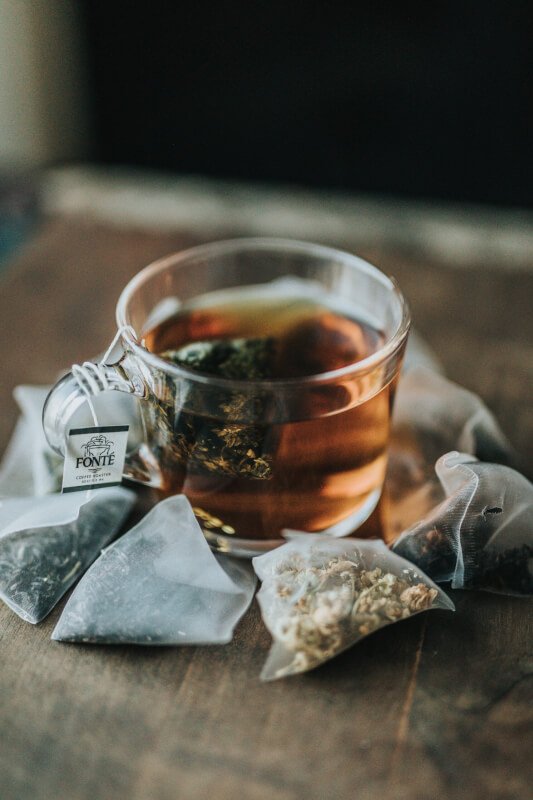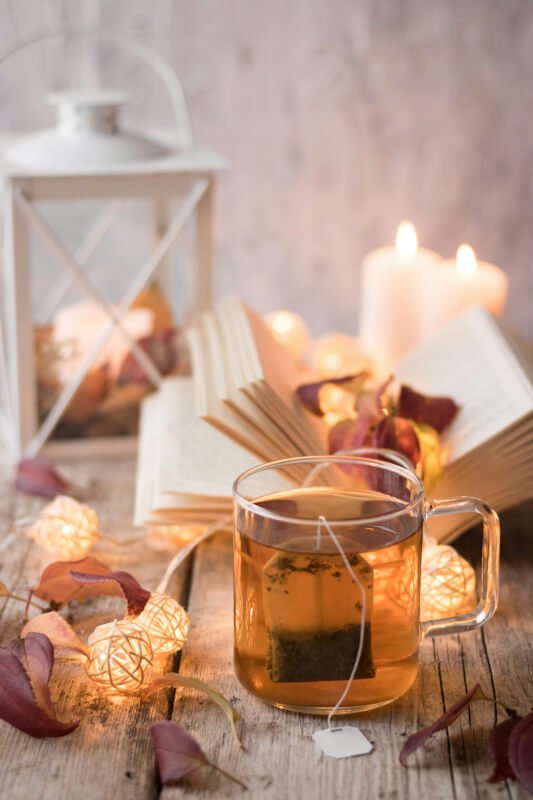Tea lovers rejoice! If you’ve ever wondered whether you can steep your specialty tea leaves more than once, the answer is a resounding yes! Say goodbye to wasting precious tea and hello to multiple enjoyable cups. So grab your favorite tea blend, a trusty teapot, and get ready to relish the delightful flavors that can be unlocked with each steep.

Benefits of Steeping Specialty Tea Multiple Times
Enhanced Flavor and Aroma
One of the key benefits of steeping specialty tea multiple times is that it enhances the flavor and aroma of the tea. As you steep the tea leaves multiple times, you will notice that the flavors become more pronounced and complex. The first steeping may reveal certain flavors, while subsequent steepings can bring out additional layers of taste. This allows you to fully experience the nuances and subtleties of the tea, creating a more enjoyable drinking experience.
Cost-Effective
Another advantage of steeping specialty tea multiple times is that it is cost-effective. Specialty teas can be quite expensive, especially high-quality loose leaf teas. By steeping the same leaves multiple times, you are able to get more value out of your tea purchase. Each steeping releases different flavors, so you can enjoy multiple cups of tea from the same batch of leaves. This not only stretches your tea budget but also allows you to fully explore the tea’s flavor profile without needing to buy different teas.
Variety of Brews
Steeping specialty tea multiple times opens up a whole world of variety in terms of brews. Each steeping brings out different flavors and characteristics in the tea, allowing you to enjoy a range of taste experiences from a single batch of leaves. For example, the first steeping may have a delicate and light flavor, while the second steeping might have a stronger and more robust taste. This variety in brews adds an element of excitement and exploration to your tea-drinking routine.
Factors Affecting Multiple Steeping of Specialty Tea
Tea Quality
The quality of the tea leaves plays a crucial role in determining how many times you can steep them. High-quality loose leaf tea, which consists of whole, unbroken leaves, is more likely to yield multiple steepings with rich flavor. On the other hand, lower-quality teas or broken tea leaves may not hold up as well and may only be suitable for a single steeping. Similarly, premium tea bags, which contain larger, higher-quality tea leaves, can also be steeped multiple times.
Tea Type
Different types of tea have different capacities for multiple steepings. Some tea types tend to hold up better and produce good flavor even after several steeps, while others may lose their vibrancy more quickly. Green tea, for example, is known to be suitable for multiple steepings due to its delicate nature. Black tea, oolong tea, white tea, and herbal tea may also offer the potential for multiple steepings, although the specific characteristics of each tea type will influence the number of steepings possible.
Brewing Method
The brewing method also affects the ability to steep tea multiple times. There are two main methods commonly used: western brewing and gongfu brewing. Western brewing involves steeping the tea in a larger quantity of water for a shorter amount of time, while gongfu brewing uses a smaller teapot or gaiwan with a higher ratio of tea leaves to water and shorter steeping times. Gongfu brewing is particularly well-suited for multiple steepings as it allows for a more concentrated extraction of flavors.
Water Temperature
The temperature of the water used for steeping tea can greatly impact the number of times the tea leaves can be steeped. Generally, cooler water temperatures, around 175°F (80°C), are recommended for green teas and white teas. Warmer water temperatures, around 195°F (90°C), are suitable for oolong teas, while hotter water temperatures, around 212°F (100°C), are typically used for black teas and herbal teas. Using the appropriate water temperature for each tea type ensures optimal extraction of flavors and the potential for multiple steepings.
Steeping Time
The duration of each steeping is another crucial factor to consider when attempting to steep specialty tea multiple times. Shorter steeping times, around 30 seconds to 1 minute, are often recommended for the first few steepings, gradually increasing the steeping time for subsequent steepings. However, this will vary depending on the tea type and personal preference. Experimenting with different steeping times can help determine the ideal duration for each steeping, ensuring a balance between flavor extraction and preventing over-extraction.

Tips for Multiple Steeping of Specialty Tea
Use Fresh Water for Each Steep
For optimal flavor and quality, it is important to use fresh water for each steeping. Reusing water from a previous steeping can dilute the flavors and lead to a less satisfying cup of tea. Fresh, filtered water ensures the purest taste and allows the tea leaves to fully express their flavor profiles with each steeping.
Adjust Steeping Parameters
To maximize the number of times you can steep specialty tea, be open to adjusting the brewing parameters. This includes experimenting with water temperature, steeping time, and the amount of tea leaves used. Each tea and personal preference may require slight modifications. Adapting the steeping parameters helps to unlock the tea’s full potential and achieve the desired flavor profile in subsequent steepings.
Experiment with Steep Counts
While specific recommendations exist for the number of steepings for various tea types, it can be fun to experiment with different steep counts. Start with the commonly suggested number of steepings, and then gradually increase or decrease the count to explore the tea’s flavor evolution. Some teas may surprise you by producing excellent flavor even beyond what is typically recommended, while others may decline in quality sooner than expected.
Observe Tea Leaves During Steeping
Another tip for multiple steeping of specialty tea is to observe the tea leaves during each steeping. Take note of how the leaves unfurl and change in appearance with each infusion. This can provide valuable insights into the tea’s quality and flavor potential. Leaves that unfurl slowly and maintain their integrity are likely to continue producing satisfying brews, while leaves that quickly become limp and lose their color may indicate a limited number of steepings.
Store Leftover Steeped Tea Properly
If you have leftover steeped tea, it is important to store it properly to maintain its freshness. Refrigerate or store the tea in an airtight container to prevent oxidation and maintain its flavor for as long as possible. However, bear in mind that the flavor and quality of leftover tea may gradually diminish over time, so it’s best to consume it within a day or two to enjoy the full experience.
Warnings and Limitations
Color and Flavor Weakening
It is important to note that the color and flavor of specialty tea may gradually weaken with each subsequent steeping. While multiple steepings can still yield enjoyable cups of tea, it’s essential to be aware that the intensity of flavors may diminish over time. However, this shouldn’t deter you from exploring the potential of multiple steepings, as the evolving taste experience can still be highly satisfying.
Reduced Caffeine Content
As you steep tea multiple times, the caffeine content in each infusion will progressively decrease. This can be a benefit if you prefer to limit your caffeine intake, but it’s important to consider if you rely on tea for an energy boost. If you desire a stronger caffeine kick, it may be more suitable to enjoy each steeping individually, rather than aiming for multiple steepings.
Consider Personal Taste Preferences
Ultimately, personal taste preferences are paramount when deciding how many times to steep specialty tea. While general guidelines exist, everyone’s palate is unique, and individual preferences should guide the brewing process. Some may find that one or two steepings are sufficient, while others may enjoy exploring the tea’s flavor complexities through multiple steepings. Don’t be afraid to experiment and tailor your brewing approach to suit your personal preferences.

Conclusion
Steeping specialty tea multiple times is a wonderful way to enhance the flavor and aroma, while also being cost-effective and offering a variety of brews. Factors such as tea quality, tea type, brewing method, water temperature, and steeping time all play a role in determining the number of steepings achievable. By following tips such as using fresh water, adjusting steeping parameters, experimenting with steep counts, observing tea leaves, and storing leftover tea properly, you can maximize the potential for multiple steepings. However, it’s important to be aware of potential limitations, such as color and flavor weakening and reduced caffeine content. Ultimately, the decision of how many times to steep specialty tea should be based on personal taste preferences, ensuring a customized and enjoyable tea-drinking experience.


